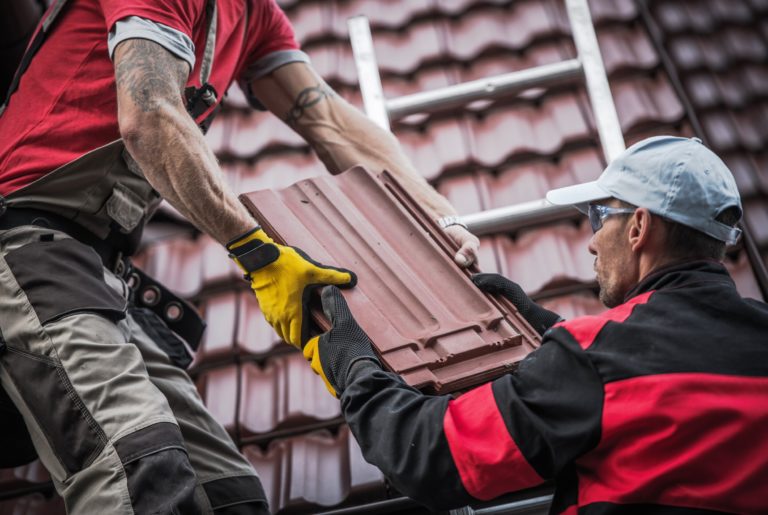
Know Your Roof: Different Parts of a Roof Explained
Whether clay, slate or asphalt, shingles are the part of a home’s exterior that most of us notice first. But a lot more goes into
That’s why knowing a little bit about underlayment is important in making an informed decision. The best roof underlayment may be the difference between a structure that really goes the distance and one that’s subpar.
If you’re trying to decide between a felt or synthetic underlayment, let our handy guide help you make a choice.
You may even want to reach out to a local roofing contractor to get their expert opinion!
One of the best things about felt underlayment is that it’s a pretty low-cost material. It’s actually one of the oldest roof underlayment types and is available in two types, No. 15 and No. 30.
Many budget-minded homeowners choose this installation material so they can stick within the bounds of their roof replacement budget.
Synthetic underlayment is made of polypropylene and polyethylene. It’s generally more expensive than the felt variety and can be purchased at a better cost margin.
So, where cost is key in the roof replacement decision-making, felt underlayment can be the go-to many a homeowner!
Felt underlayment may be more cost effective, but it can absorb water quickly and wrinkle because of its material makeup. If it’s left out in poor weather conditions, this can create problems during roof underlayment installation.
So, if you’re going with felt, it’s important that shingles are installed on top of it as soon as possible to create a waterproof barrier!
While felt tends to absorb water, synthetic roofing functions to repel it. Because of its chemical makeup, it’s moisture resistant and provides better protection against the elements
This helps to keep synthetic underlayment wrinkle free and resistant to mold!
Because felt underlayment is less durable, it can sometimes tear in high winds during the installation process and dry out in the heat.
As it compares to felt, synthetic roof underlayment can stand up against the harshest of winds because it’s a tough, durable material.
It also holds up to UV rays or moisture during the installation process.
Unfortunately, felt roof underlayment can make for a more complicated installation process too as it has a slippery surface!
Because synthetic underlayment often has a slip-resistant surface, it can offer more safety during the roofing process. For workers walking around during roof installation, there’s less need to be on guard.
Fortunately, roofing contractors won’t have to feel bad about walking all over synthetic underlayment either. Like many things, this material can stand up against a lot of foot traffic!
Because felt weighs more than synthetic roof underlayment, it can be more difficult for roofing contractors to get it onto the roof. The added weight can also mean that the installation process is more time consuming.
Synthetic underlayment can be up to four times lighter than felt since it comes in longer, wider rolls! Because of this, the installation process may go more quickly when this type of underlayment is used.
If you’re looking for a local roofing contractor that can do a speedy install, choosing a synthetic underlay can help to speed up the process.
Choosing between a felt or synthetic underlayment may be just another choice for a homeowner. However, like so many other things, it’s an important part of the roof installation process that will have an impact on your roof’s longevity.
Being budget-minded is an important consideration when it comes to roof replacement. But be sure you consider all of the factors when you make the final choice on your roofing materials.
If you’re wondering what is the best roof underlayment for your home, reach out to the professionals at Dr. Roof today at 1-818-514-1769 so you can get their informed opinion.